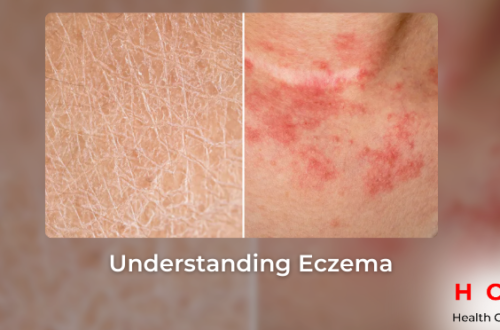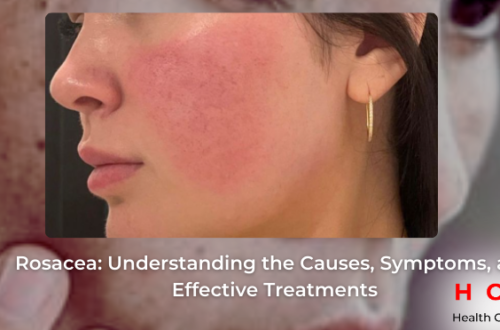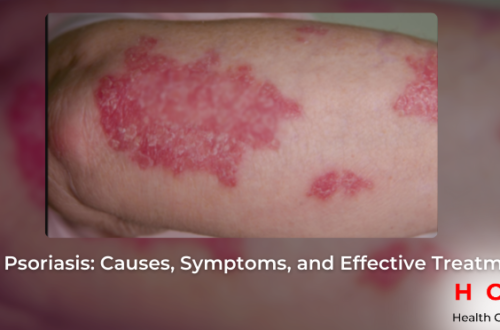
Vitiligo: Causes, Symptoms, and Effective Treatments
Vitiligo is a chronic ailment of the skin that is described by depigmentation or the shedding of the pigment resultant in the formation of a white color on various parts of the body. This takes place when melanocytes, which is the skin cell responsible for the production of melanin, either cease to work or are destroyed. Vitiligo can develop at any age and in both genders and nationality, despite being non-cancerous, this disease can lead to principal emotional and sociological problems in the life of an affected person.
In this article, we are going to find out the reasons why vitiligo could develop, the signs that indicate it and the available options for vitiligo cure.
What is Vitiligo?

Vitiligo is a skin disorder where melanocytes, the cells that give your skin, hair, and eyes their color, are destroyed. This results in white patches on the skin. While the exact cause of vitiligo is unknown, it is believed to be an autoimmune condition where the body’s immune system mistakenly attacks and destroys these pigment cells.
Vitiligo can affect any part of the body, but it is more noticeable in areas exposed to the sun, such as the face, hands, and arms. In some cases, the patches spread and cover large areas of the body.
Although vitiligo does not cause physical discomfort, the visible white patches can lead to social anxiety and emotional distress, especially in societies where appearance plays a significant role in self-esteem.
Causes of Vitiligo
While the exact cause of vitiligo remains unknown, several factors are thought to contribute to its development:
- Autoimmune Response: Many researchers believe that vitiligo is an autoimmune disorder where the immune system mistakenly attacks and destroys melanocytes, leading to a loss of pigment.
- Genetics: A family history of vitiligo or other autoimmune conditions may increase the risk of developing the disorder. Approximately 20-30% of people with vitiligo have a relative with the condition.
- Oxidative Stress: Some studies suggest that an imbalance between antioxidants and free radicals in the body may play a role in the destruction of melanocytes.
- Neurogenic Factors: Certain chemicals released from nerve endings in the skin may damage melanocytes, leading to the depigmentation seen in vitiligo.
- Environmental Factors: Exposure to certain chemicals, sunburn, or stressful events may trigger the onset or progression of vitiligo in some individuals.
Symptoms of Vitiligo
The most obvious symptom of vitiligo is the appearance of white patches on the skin. However, the progression and location of the depigmentation can vary widely between individuals. Common symptoms include:
- Depigmented Patches: White patches of skin usually start in sun-exposed areas like the hands, face, and feet. These patches may spread to other parts of the body over time.
- Premature Graying: Hair on the scalp, eyelashes, eyebrows, and beard may turn white or gray prematurely due to the loss of pigment.
- Loss of Color in the Mucous Membranes: In some cases, the mucous membranes inside the mouth and nose may also lose pigment.
- Eye Color Changes: The pigment inside the retina or the color of the eye may change in rare cases of vitiligo.
Types of Vitiligo
Vitiligo can be classified into two main types: non-segmental vitiligo and segmental vitiligo. Each type has distinct characteristics:
1. Non-Segmental Vitiligo
Also known as generalized vitiligo, this is the most common form of the disorder, affecting about 90% of individuals with vitiligo. In non-segmental vitiligo, white patches appear symmetrically on both sides of the body and can spread gradually over time.
- Generalized Vitiligo: This is the most common form, with patches appearing randomly across the body.
- Acrofacial Vitiligo: Affects the hands, feet, face, and the areas around body openings like the eyes, nose, and mouth.
- Mucosal Vitiligo: Affects the mucous membranes inside the mouth and genital regions.
- Universal Vitiligo: In rare cases, the depigmentation covers most of the body.
2. Segmental Vitiligo
Segmental vitiligo is less common and tends to develop at a younger age. This type is characterized by white patches that appear on one side of the body, often following a pattern along a nerve segment. Unlike non-segmental vitiligo, segmental vitiligo usually does not spread beyond the affected area.
Treatment Options for Vitiligo
Although there is no cure for vitiligo, several treatments can help manage the condition, improve the appearance of the skin, and restore some color. Treatment options depend on the extent of the depigmentation and the individual’s preference.
1. Topical Treatments
- Corticosteroids: Topical corticosteroid creams may help restore some color to the white patches, especially in the early stages of vitiligo. These creams are more effective on smaller patches of skin.
- Calcineurin Inhibitors: Topical creams like tacrolimus and pimecrolimus can help with pigmentation and are particularly useful in areas like the face and neck where corticosteroids may not be suitable.
- Topical Vitamin D Analogues: These are sometimes used in combination with corticosteroids to promote repigmentation.
2. Light Therapy (Phototherapy)
Phototherapy, also known as UVB therapy, involves exposing the skin to controlled amounts of ultraviolet B (UVB) light. It can help stimulate melanocyte activity and promote repigmentation. Phototherapy is particularly effective for widespread vitiligo and is often combined with topical treatments for better results.
- Excimer Laser Therapy: This form of light therapy focuses a narrow beam of UVB light on the affected areas, making it a more targeted treatment.
3. Depigmentation Therapy
For individuals with extensive vitiligo, depigmentation therapy may be an option. This treatment involves lightening the remaining pigmented areas of the skin to create an even skin tone. It is typically recommended when more than 50% of the body is affected by vitiligo.
- Monobenzone: A depigmentation cream that can gradually lighten the skin to match the white patches.
4. Surgical Options
In some cases, surgical treatments may be considered, especially for individuals with stable, non-spreading vitiligo.
- Skin Grafting: This procedure involves removing small sections of healthy, pigmented skin and transplanting them onto areas affected by vitiligo.
- Blister Grafting: In this technique, blisters are created on pigmented skin using suction, and the tops of the blisters are then transplanted to the depigmented areas.
- Tattooing (Micropigmentation): Tattooing can be used to implant pigment into the white patches. This option is usually more effective for small areas of skin, such as the lips.
5. Counseling and Support
Living with vitiligo can be emotionally challenging, as it can affect one’s self-esteem and social interactions. Counseling, support groups, and speaking with others who have vitiligo can provide emotional support and coping strategies.
Lifestyle Changes and Home Remedies
While medical treatments can help manage vitiligo, certain lifestyle changes and home remedies may improve the appearance of the skin or help prevent further pigmentation loss:
- Sunscreen: Since vitiligo-affected skin is more sensitive to sunburn, wearing broad-spectrum sunscreen with a high SPF is essential for protecting your skin.
- Cosmetics: Skin camouflage products, such as makeup or self-tanning lotions, can help conceal the white patches and create a more even skin tone.
- Healthy Diet: A diet rich in antioxidants, vitamins, and minerals may support overall skin health and boost the immune system.
- Avoiding Triggers: Avoiding known triggers like sunburn, stress, and chemical exposure can help prevent further depigmentation.
Emotional and Social Impact of Vitiligo
The psychological impact of vitiligo can be profound, as the condition can lead to feelings of embarrassment, low self-esteem, and social anxiety. For some, the visible nature of the disorder may affect personal relationships or cause difficulties in professional settings.
Support from family, friends, and mental health professionals is vital for coping with the emotional aspects of vitiligo. Joining a vitiligo support group can also be helpful for connecting with others who understand the challenges of living with this condition.
Vitiligo is a complex skin condition that can affect both physical appearance and emotional well-being. While there is no cure, a variety of treatments and coping strategies can help manage the symptoms and improve the quality of life for those living with vitiligo. If you or someone you know is affected by vitiligo, consulting a dermatologist to create a personalized treatment plan is an essential step in managing the condition.




